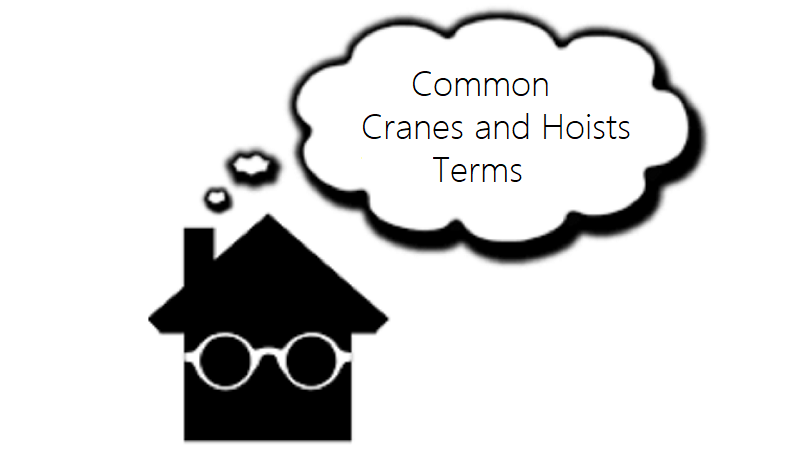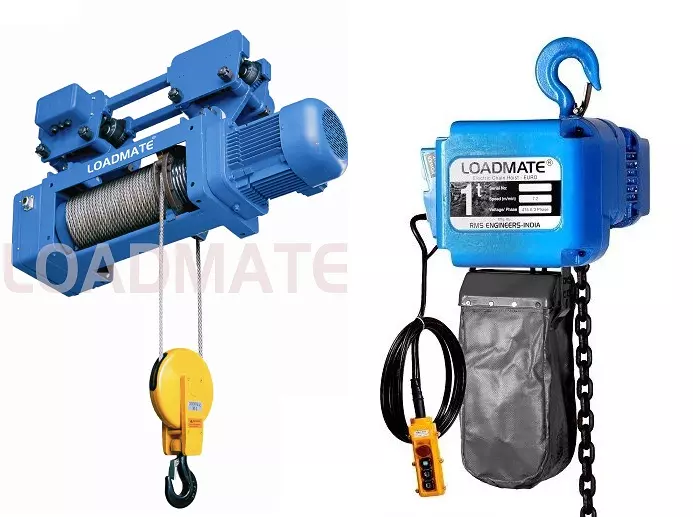Cranes and hoists are complicated systems of lifting heavyweight. Although they have simplified the laborious job, first-time crane users feel confused while operating the system. When you are going to buy a crane and hoist, your manufacturer may use some terms to inform you about the system's ins and outs. Without any knowledge of those terms, you may not buy the right crane confidently. Moreover, a proper understanding of relevant terminologies will enable you to operate the cranes and hoists rightly. Thus, we have listed some commonly used terms for cranes and hoists.
Terminologies related to cranes
- Axial Load- This term indicates the total force vertically applied to the jib crane structure. To measure this load, you have to multiply load weight by the design factor. Then, you can add the result to the overall crane weight.
- Disc brake- Disc brake is a type of locking mechanism that does not need pressure from the outside to turn out the retarding force.
- Explosion-proof crane- In some cases, you need to use the crane in a hazardous environment that is full of abrasive dust and ignitable fumes. It is a risk to work in this environment. Modern anti-explosion cranes have specialized designs for protecting your equipment and workers. These cranes play an important role in gas power plants, oil refineries, petrochemical plants, and several other sites.
- Lift height- It is the maximum height up to which a bucket, hook, or magnet can move vertically from the floor surface.
- Height Under Boom- It is another measurement starting from the ground to the underside jib crane's boom. To measure this HUB, you have to add the load lifting distance to the load height. You must also focus on the headroom needed for the trolley, attachments, and hoist.
- Monorail beam- You know that overhead bridge cranes have a system for sustenance on either side. However, monorail cranes remain fitted to the underside part of a monorail beam. By installing monorail beams in a limited space, you can join multiple beams together.
- Wheel load- It refers to the load without vertical force and impact on the wheel. The trolley needs to be on the bridge for the highest loading capacity.
- Dead Load- It indicates the load present on a structure, remaining in a stable position. While using a crane bridge, these loads include a cross shaft, footwalk, girders, and drive units.
- Crane, power-operated and cabin-operated- The power-operated crane has pneumatic, electric, and hydraulic mechanism. In the pulpit-operated crane, the operator controls the movement by using controllers of a control room.
- Limit Switch- Limit switch is a device intended for the automatic power cut at the travel limit for the crane motion.
- Dummy Cab- Dummy cab is the compartment of an operator on the radio-controlled and pendant crane. There is no permanently installed electrical controls for operators.
- Pendant Station- It is one of the handheld control systems, enabling you to manage additional tasks using machine setup and maintenance tools. As it suspends from a crane, we call it a pendant station. You can find a pendant station in different options and sizes.
- Counterweights- The term, counterweight, is applicable while you need to prevent your crane system from tipping at the time of lifting the load. It is the modular weight removed and added based on your load weight.
- Tag line- It is a rope line, intended to attach the load lifted. This line helps in controlling the swing and spin of the load, and your workers will stay safe as they maintain distance from the load.
- Remote receiver- Your crane has a remote-control system to help you in operating the crane from a distance. This receiver is a part of the system, connecting to the crane and converting the signal into crane action.
Terminologies related to hoists
- Ratchet- A lever hoist is controllable in a manual way. However, instead of dragging the hand chain, the ratchet handle needs to control the hoist. As the handle is accessible to you, the ratchet helps in lowering to the ground.
- Lever hoist- The capability of using any position is the major factor in differentiating the lever hoist from other hoists. Lots of hoist chains bind together in some positions. However, for the lever hoists, items can be pulled horizontally.
- Counter-torque- It is a process, in which your hoist reverses the motor to turn out power in the reverse direction.
- Two blocking- It occurs while the load from the hook blocks the hoist structure. Thus, the hoist drum cannot wind up anymore.
- Load line (hoist line)- It indicates the wire rope from the boom's end to the load block. The reeled load line can lower and raise the load.
- Variable Frequency Drive- This term is applicable to both hoist and crane. The drive with adjustable speed manages torque and motor speed by controlling the motor voltage and input frequency. The VFD enables you to find the perfect engine speed for proper operations to minimize energy costs.
These terminologies are important when you are buying cranes and hoists from us.




